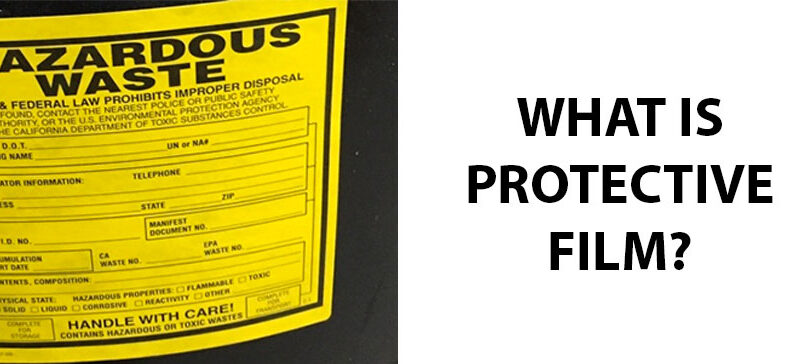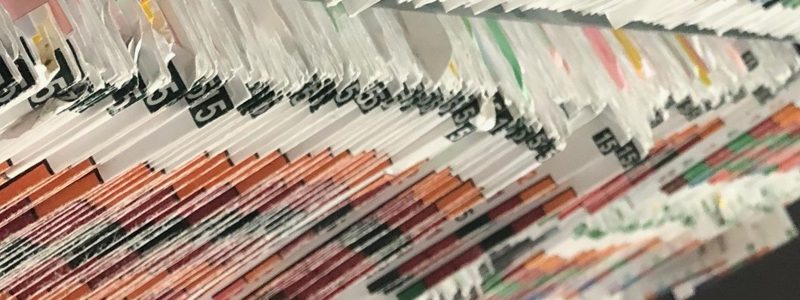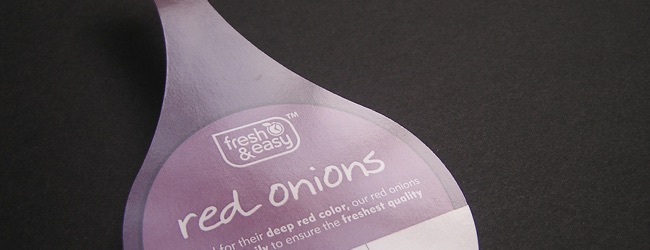From skyscrapers to intricate electronic components, protective film defends against the rigors of manufacturing, transportation, and everyday use. At its core, protective film is more than just a temporary shield; it’s a meticulously engineered barrier that protects surfaces from the many challenges they’ll face in their lifecycle. Whether protecting against scratches and abrasions or corrosion, protective film upholds the quality and longevity of countless products.
With decades of experience as a leading label manufacturer, we’ve seen firsthand the transformative power of protective plastic film. Read on to learn more about protective film and the benefits it may have for your industry.
What is Protective Film?
Protective film, also called surface protection film, is a thin layer of material that is applied to the surface of various objects to safeguard them from potential damage or contamination. These films provide a barrier against a wide range of challenges, such as scratches, abrasions, impacts, moisture, dust, UV radiation, corrosion, and more.
Protective films are commonly made from plastic materials like polyethylene, polypropylene, polyester, or polyvinyl chloride. They come in various thicknesses and adhesive strength, depending on the specific application and level of protection required. Because protective film is so versatile and adaptable, it has become an essential tool in many different industries.
Protective Plastic Film
Not all protective films are made from plastic (paper film, for example), but a large number are. The type of protective plastic film you’re using will come with different characteristics and properties. Here are some of the materials commonly used to make protective plastic films:
- Low-density polyethylene (LDPE): Low-density polyethylene is lightweight, flexible, and affordable. LDPE protective plastic film is commonly used to protect surfaces from scratches, dirt, and minor impacts.
- Polypropylene (PP): Polypropylene film offers good clarity, tear resistance, and moisture resistance. PP film is less elastic than other protective plastic films, but can endure high temperatures without a problem. PP films are commonly used to protect surfaces during manufacturing and transportation.
- Polyvinyl chloride (PVC): Polyvinyl chloride films are super flexible and chemical resistant. They’re commonly used in applications that require resistance to oil or grease and are especially useful for protecting metal surfaces.
- Co-extruded, low-density polyethylene (COEX or Co-ex LDPE): COEX films are created by layering two plastics together in one film. This gives them more protective characteristics than other films.
- Polyolefin (PO): Polyolefin films are commonly used as a shrink or stretch film. They are a great option for protecting glass or painted metal.
Types of Protective Film
There are many different types of protective film on the market today, but the two most common types are surface protection film and painted surface film. Both are designed to protect the surface from damage, but they cater to different needs.
Surface protection film is a thin layer of material applied to surfaces to shield them from scratches, abrasions, moisture, and other potential damage. They’re often made from materials like polyethylene, polypropylene, and polyester. They can be made in a variety of thicknesses and adhesive strengths, depending on your specific needs.
Advantages of surface protection film:
- Versatile: Surface protection films can be applied to a wide range of surfaces, including glass, metal, plastics, painted surfaces, and so on.
- Temporary: These films are typically meant to be temporary, providing protection during manufacturing, shipping, installation, or construction processes.
- Removable: They can be peeled off without leaving adhesive residue or causing damage to the surface you’re trying to protect.
- Customizable: You can choose films with varying levels of adhesive strength and thickness to ensure the right balance between protection and ease of removal.
- Transparency: Transparent protective films allow the underlying surface to remain visible, making them suitable for products with aesthetic appeal.
A painted surface protectant, on the other hand, is a specialized product designed to enhance and safeguard the appearance of painted surfaces, like automotive paint or industrial coatings. These films are applied to painted surfaces and often provide additional benefits beyond simple protection.
Advantages of painted surface protectant:
- Long term protection: Painted surface protective films offer durable protection over extended periods, helping to maintain the quality and finish of the paint.
- Chemical resistant: Some protectants provide resistance to chemicals, contaminants, and environmental factors that could ruin the paint.
- UV protection: Many protectants include UV inhibitors to prevent fading and deterioration of the paint caused by exposure to sunlight.
- Gloss enhancement: Some protectants can enhance the gloss and shine of painted surfaces, giving them a more polished appearance.
- Hydrophobic: Certain protectants are hydrophobic, causing water and other liquids to bead up and roll off the surface.
- Self-healing: Many paint protection films are able to self-heal when scratched.
Benefits of Protective Film
Protective films offer many benefits for a variety of industries and applications. These benefits make them indispensable for protecting surfaces, products, and components from damage. Here are some key benefits of using protective films:
- Surface protection: The primary benefit of protective films is the protection of surfaces from scratches, abrasions, impact, dirt, dust, moisture, and other potential damage.
- Preservation of aesthetics: Protective films help maintain the original appearance, finish, and quality of surfaces, preventing the need for touch-ups or costly repairs. This is particularly important for products with high aesthetic value, such as vehicles, electronics, and architectural finishes.
- Cost savings: By preventing damage to surfaces, protective films can significantly reduce the need for repairs, replacements, and rework, saving time and money during manufacturing processes.
- Reduced environmental impact: Using protective films can extend the lifespan of products and components, reducing the need for premature disposal and replacement.
- Ease of removal: Protective films are designed to be easily removable without leaving residue or damage. This makes them easy to remove when the protection is no longer needed.
- Temporary or long-term: Depending on the type of protective film chosen, surfaces can be protected temporarily or long-term.
- Hygiene: Protective film can help ensure hygienic conditions in environments like cleanrooms and medical facilities, where surfaces need to be shielded from contaminants.
- Quality assurance: Using protective films ensures that end products reach customers in pristine condition, enhancing customer satisfaction and brand reputation.
Best Applications of Protective Film
Protective film is extremely versatile and can be used in many different ways. Here are some of the best applications of protective film:
- Component parts
- Glass surfaces
- Metal finishes
- Painted metal surfaces
- Touchscreens
- TV, computer, or mobile phone screens
- Circuit boards
- Window tinting
- Car interior parts, such as dashboards, consoles, and door panels
- Exterior surfaces of airplanes, helicopters, and other aerospace vehicles
- Machines components
- Industrial equipment
- Signage and decals
- Medical equipment
- Cleanroom surfaces
- Floor protection
- Packaging
- Transport containers
Medical Device Labeling Requirements
Protective Film in Different Industries
From aerospace to automotive industries, protective film is used in a variety of ways to protect surfaces from damage. Here’s a look at how different industries have taken advantage of the benefits of protective film:
- Automotive: Protective film is used to shield delicate surfaces such as windows, interior components, and painted exteriors during manufacturing, assembly, and transportation.
- Electronics: Electronics, such as cell phones, tablets, or laptops, are filled with delicate components that can be damaged easily. Screens are especially vulnerable. Protective film can protect electronics from scratches, cracks, and dents that can affect both aesthetics and functionality.
- Aerospace: Protective plastic film is lightweight and versatile enough to protect sensitive aerospace components, increasing their lifespan.
- Construction: Protective film is used to safeguard glass, metal, and other surfaces during construction and renovation.
- Furniture and appliances: Appliances and furniture are often coated with protective films to prevent scratches and damage during transit or installation.
- Manufacturing: During manufacturing, protective film can be applied to components to prevent damage or contamination.
- Medical: Medical equipment is subject to a lot of wear and tear. Protective films can protect expensive equipment from corrosion and other damage.
- Renovation: When renovating a space, protective films can prevent damage to floors, walls, and other surfaces while work is being done.
How to Choose the Right Protective Film
Protective plastic film is extremely useful, but each type comes with different characteristics. Choosing the right protective film will depend on your intended application and the conditions your surface will be subject to. Here are some things to consider when choosing protective film:
- Surface: The type of surface or product you need to protect can impact the best type of protective film. Different materials and finishes require different protective film.
- Duration of protection: Do you need the film to last for a long time? Or will you be using it temporarily?
- Protection requirements: Do you need protection against scratches, impacts, UV radiation, moisture, chemicals, or other factors? Different protective films offer different types of protection.
- Adhesive strength: Consider the level of adhesive strength you need. Should the film be easy to remove? Or does it need to provide secure adhesion for longer periods?
- Aesthetics: If aesthetics are important, choose a film that is transparent or optically clear.
- Industry standards: Ensure that the protective film meets any industry-specific standards or requirements, especially in sectors like aerospace, electronics, and healthcare.
At Coast Label, we understand the importance of protecting your products and surfaces. That’s why we only use the best materials to manufacture our protective film. Our application specialists will work with you one-on-one to help you choose the right protective film for your needs.



